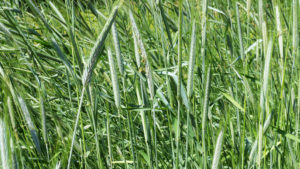The modern distilling boom is creating a unique opportunity for farmers and businesses involved in grain production. In Pennsylvania, distilling is growing by leaps and bounds, but the raw material for making whiskey is grain and many distillers just don’t know much about it. They know they want rye for rye whiskey, for instance, but where are they supposed to get it? What is the difference between Danko and Aroostok? Is it non-GMO? Do I buy it directly from a farmer or a grain merchant? It’s not just the distillers, either. The farmers are also beginning to see a demand for small grains, but don’t quite know how to approach distillers.

I’ve been learning a lot about just how much of Pennsylvania’s distilling tradition has been lost. Pennsylvania was once a huge whiskey producing state. Hundreds of distillers relied on the farmers that supplied them with grain, the maltsters that malted the grain, the millers that ground that grain and the trains and transportation that moved that grain to the distilleries. There was a solid infrastructure in place that kept the whiskey flowing. Today, this is not the case. Farmers were once distillers and understood the process from the seed to the still. The modern distiller is in many cases a home brewer or a rebel distiller that buys his/her grain from the local home brew supplier and knows very little about how to grow grain. This disconnect is being felt throughout the young distilling industry, but there are exceptions. Some farmers are working directly with distillers as their grain source and the interaction is crucial to their success.


Farmers plant corn and soybeans because their seeds have been developed by agro-businesses to perform well and create high yields come harvest time. Farmers need that large, successful crop to make a living. For years, they have been hearing that there’s money in organic farming and in non-GMO’s, but getting an organic certification is a huge pain in the neck and those crops don’t produce anywhere near the numbers that a farmer would need to get by. And weeds! Maintaining an organic farm without pesticides is laughable in most farmers minds. Nature is a cruel landlord and GMOs can at least provide more predictability and a stable income. Farming is a business, though it is not often seen as such, and businesses thrive when they are providing a product that the consumer needs and is willing to pay for.

Enter the distilling boom. This may be the first time in a long time that farmers are actually willing to plant a less than ideal crop. Even if a crop doesn’t yield the high numbers, they can sell directly to a distillery for a profit. They can work together on deciding what type of rye or corn or small grain to plant and agree on the value of that crop together. As small as the addition of another crop into the farmer’s rotation may seem, it could mean eventually big things for soil health and overall crop diversity.

Think about that for a minute-diversity of crops. It’s not something that we think about often. We drive by corn field after corn field and see soybean fields a-plenty. Where is the wheat or rye or barley? They don’t seem to exist. When we do see them it’s in the spring as young green shoots right before they are tilled back into the soil. This is because they were not planted for harvest, but as cover crops or “green manure”. The beauty of local distilleries sourcing grain locally is that we all benefit. Healthy farms and diversified crops mean healthy soil and responsible stewardship of the land. Rye, wheat and barley are winter crops, which means they are planted in the autumn in Pennsylvania and harvested in the summer. These crops put nitrogen back into the soil and reduce soil erosion. Rye grain does not require the large amounts of fertilizer that corn needs so we have less excess fertilizer run off into our streams and rivers. Oh, and they make great whiskey!

Farmers working with distillers means cooperation and education for both parties. Just as chefs need to understand the ingredients they work with to improve the outcome of their dish, distillers must understand their ingredients. Learning which grains and varietal works best in your distillery is a process that can be advanced with your farmer’s input. It may be that non-GMO corn varietals are not as high yielding or as high in starch, but whiskey judges have been awarding red and blue corn whiskey with medals for flavor superiority at craft spirits competitions across the country since distillers began experimenting with them about a decade ago. Each small grain varietal is different. They cook differently and convert starches differently and each has its own distinct flavor. The sky is the limit with new whiskey styles that can crafted from these grains. Now the challenge is to put distillers and farmers together and taste the fruits of their labor. I know I’m excited to see what happens!

